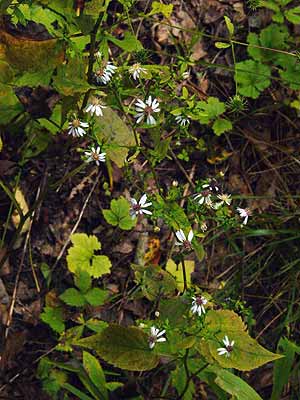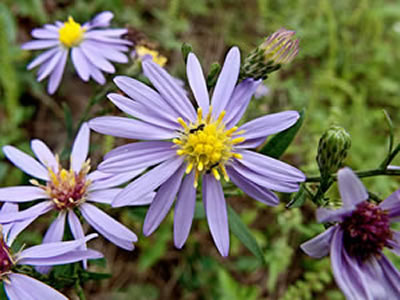Description
Average to dry soil, blue flowers in September/October, good naturalizer under
trees, at the edge of woods, or as a filter among Hostas and Astilbes, which
look pretty rough by September.
Habitat
Found in the woods and dry meadows of most of North America.
Culture
Prefers a partially shaded site, but will tolerate sun or shade. Flowering is best
with 3 hours of sun or more. Works well in average, dry or moist soil, but does
not like to be consistently wet.
Container Cultivation
Grow in a standard mix with good drainage in light to medium shade (30-50%) with
consistent moisture. Can be grown in quarts or gallons.
Additional Information
Plants generally are highly branched with many small flowers, each generally
less than one inch wide. Ten to twenty narrow ray flowers, ranging in color
from dark blue to off-white, surround a yellow center. Although a good deal
of variability occurs, plants usually bear smooth stems and thin, hairly leaves.
The thin, sharply toothed leaves provide the plant with common names such
as Bee Weed and Bee Tongue. Although plants often look bedraggled in the
wild, cultivation tends to make them stand up straight and put their shoulders
back. The lower leaves are heart shaped (cordate), and the upper leaves are
ovate to lanceolate. The small flowers lend themselves to cut flowers,
particularly as fillers with larger flowers in arrangements. The species itself
is offered, but numerous cultivars have also been selected. Plants grow well
in both the North and South, but leaf spotting becomes a bigger problem in
the humidity of the South.

